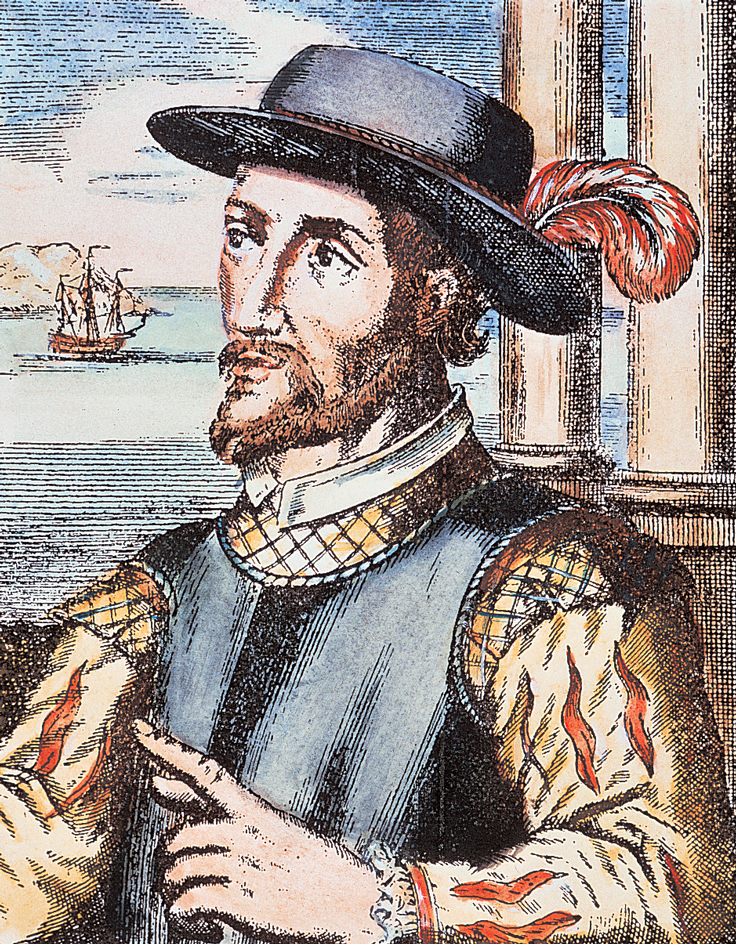Ponce de León, Juan, << PAWN say day lay AWN or PAWNS duh LEE awhn, hwahn >> (1460?-1521), a Spanish explorer, led the first recorded European expedition to reach what is now Florida. He was one of the first explorers to claim part of the North American mainland for Spain. He also conquered what is now Puerto Rico and became its first colonial governor.

According to a popular legend, Ponce de León came to Florida to find a spring called the Fountain of Youth. Old stories said that the waters of the spring were supposed to restore youth and cure sickness. But historians believe that even though Ponce de León may have heard stories about a Fountain of Youth, he was actually interested in finding wealth and new lands that he could govern.
Early life and career.
Little is known about Ponce de León’s early life. He was born in Santervás de Campos, near the Spanish town of Palencia. He came from a noble family and served as a page in the Spanish court.
Ponce de León reportedly fought in the long Spanish campaign that in 1492 finally drove the Moors (Spanish Muslims) out of Granada, their last stronghold in Spain. Most historians believe that he then joined the vast second expedition of the famous explorer Christopher Columbus . The fleet reached Hispaniola, a Spanish island in the Caribbean Sea, in 1493. Ponce de León may have then gone back to Spain before returning to Hispaniola in 1502. However, some historians think he did not sail with Columbus but instead may have first come to Hispaniola in 1502.
Ponce de León became a soldier on Hispaniola and led Spanish forces against the Indians in the eastern province of Higüey (now part of the Dominican Republic). He founded the town of Salvaleón, where he built a residence and invested in mining and agricultural enterprises.
In 1508, Ponce de León left Hispaniola to explore the island of San Juan (later renamed Puerto Rico). He discovered gold there and conquered the island. He became governor of the island in 1509.
Florida expeditions.
In 1512, King Ferdinand chose Ponce de León to lead an expedition to find and colonize an island called Bimini that the Spaniards thought lay north of Cuba. Ponce de León set sail for Bimini with three ships in 1513. During the voyage, he explored the area of the Bahamas. On April 2, 1513, he anchored off the coast of Florida—which he thought was another island—and claimed it for Spain. He probably named the land La Florida, because he arrived there during the season of Easter, which the Spaniards called Pascua Florida (Easter of the Flowers).
The explorers landed on the east coast of Florida, probably somewhere between present-day St. Augustine and Cape Canaveral. From there, they sailed down the coast, exploring almost the entire eastern shoreline and the southern tip of Florida. They swung around the Florida Keys and then continued partway up Florida’s western coast. The Europeans made a temporary base near present-day Fort Myers. They fought several battles in this area with the Calusa people.
In May 1513, Ponce de León began a roundabout trip back toward Puerto Rico. He probably stopped on the north coast of Cuba. He sailed by the Bahamas again before he returned to Puerto Rico in the fall.

In 1514, Ponce de León sailed to Spain to press his claims to the Florida territories. King Ferdinand authorized him to colonize Bimini and Florida. But the king also ordered him to stop the attacks by the indigenous (native) Carib on the Spanish colonies in Puerto Rico. Ponce de León returned to Puerto Rico in 1515 to fight the Carib. However, King Ferdinand died in 1516. Ponce de León soon returned to Spain, where his authorization to make a second expedition to Florida was renewed.
In February 1521, Ponce de León sailed from Puerto Rico with two ships carrying as many as 200 settlers and supplies to establish a colony. They probably landed near the place where the first expedition had encountered the Calusa. The Calusa again put up a stiff resistance against the Spaniards. Ponce de León was wounded, and the colonists decided to turn back. Ponce de León died from his wounds shortly after the fleet reached Cuba.
